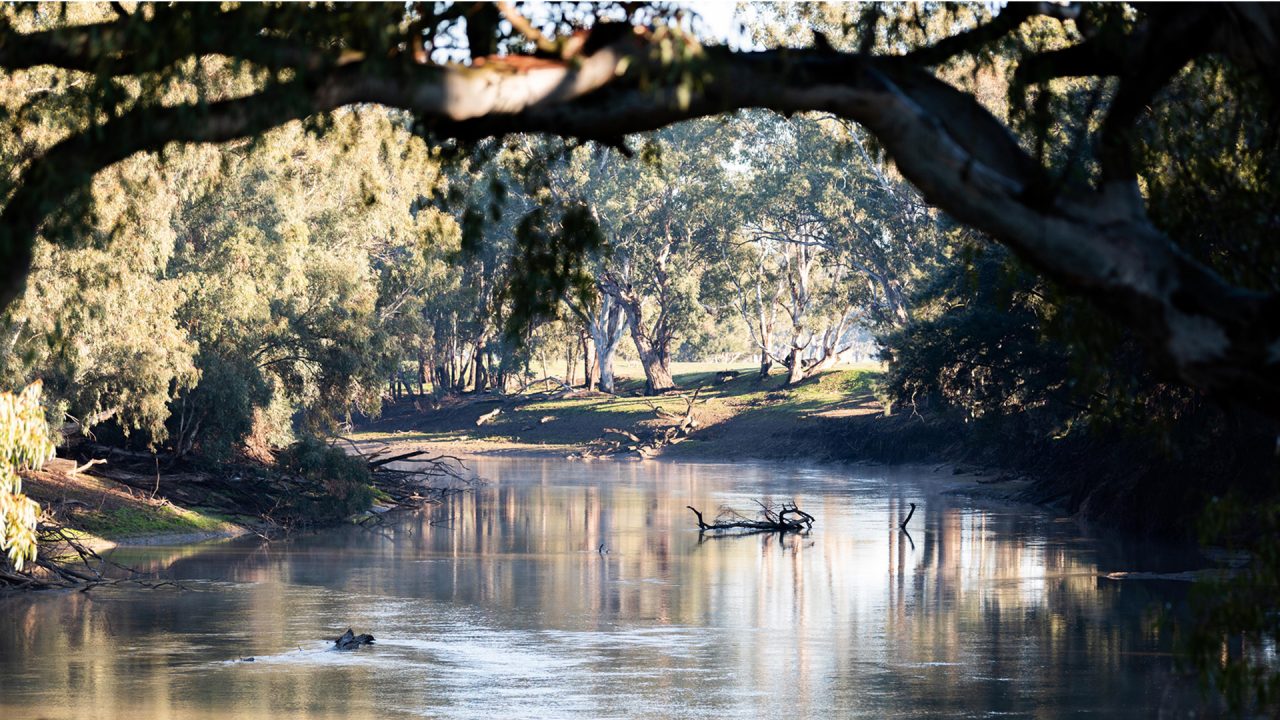

Agriculture
| Sector | Agriculture |
| Sub-sector | Livestock |
| Location | Australia |
Paraway is focused on improving the climate resilience and biodiversity of native flora and fauna across its portfolio via several strategies, including the restoration and conservation of vegetation corridors along creeks and rivers. Known as riparian areas, these waterways and adjoining vegetation corridors dictate how water moves through and is stored in the landscape, providing critical habitat for native flora and fauna.
When exposed to unrestricted livestock access on grazing properties, riparian areas are at risk of becoming degraded over time, which can lead to increased riverbank erosion, reduced water quality as well as the reduction of native vegetation and fish habitat.
Collaborating with the New South Wales Local Land Services through the NSW Fencing Northern Basin Riverbank Program,1 in 2022, Paraway constructed over 26 kilometres of fencing to protect and restore approximately 48 kilometres of river frontage and 380 hectares of sensitive riparian areas.
The conservation project also included the installation of 19 alternative water points for livestock, removing the need for grazing animals to access these areas for drinking water.
Outcome
This can create flow-on effects, including improved water quality for downstream users and enhanced stream aquatic life.2 Over time, the natural revegetation and restoration of woody debris along the waterways is expected to create new habitat for native fish species, while also slowing the flow of water through these rivers and streams.2 This will enable the surrounding wetlands, river flats and riparian vegetation zones to recover, completing the natural landscape rehydration processes.
In addition to improving the health of these riparian areas, the construction of new fencing and alternative water points is expected to deliver improved agricultural productivity by enabling more efficient livestock grazing, improved pasture production, greater biosecurity control and the provision of higher-quality drinking water for livestock. Collectively, these benefits are key contributors to improving animal health and productivity and reducing the emissions intensity of livestock grazing systems.3
of fencing
of river frontage protected
of sensitive riparian land under renewal
We’re supporting change across our assets to ensure we realise the unique role agriculture plays in the restoration of soil, water and biodiversity, while producing valuable food and fibre.”
Elizabeth O'Leary
Head of Agriculture and Natural Assets
Macquarie Asset Management
At Macquarie Asset Management, we view sustainability as part of our fiduciary duty to protect and grow our clients’ assets. This focus also helps us generate positive outcomes for our investee companies and the communities they serve. Our latest Sustainability Report outlines the progress we have made over the past financial year.